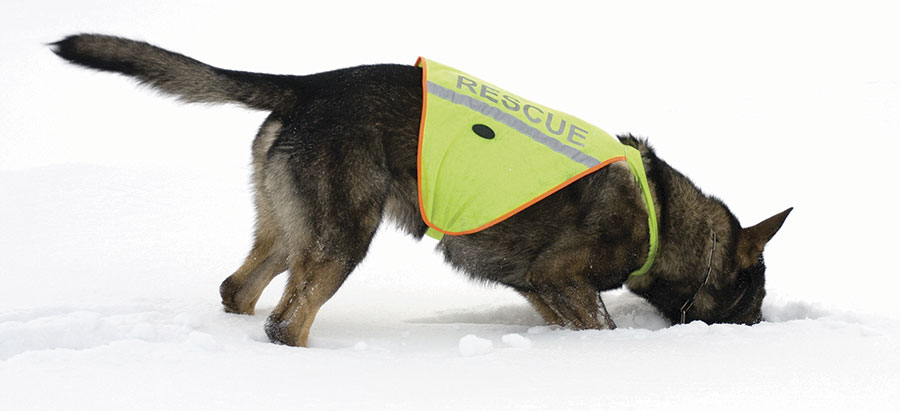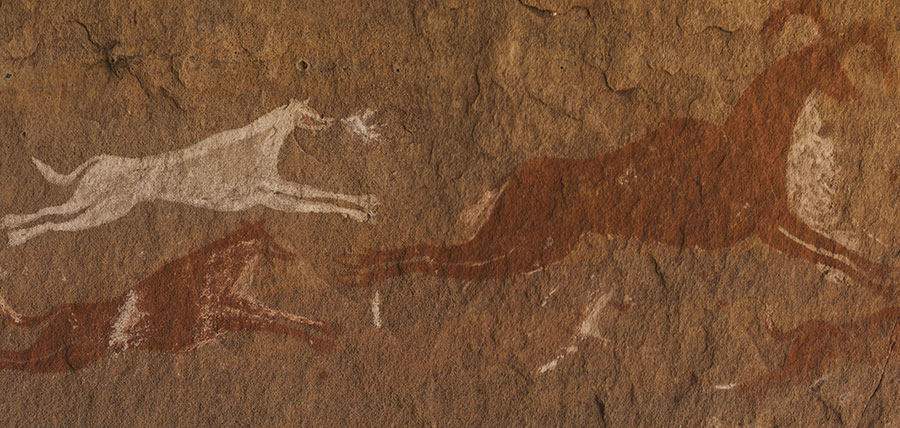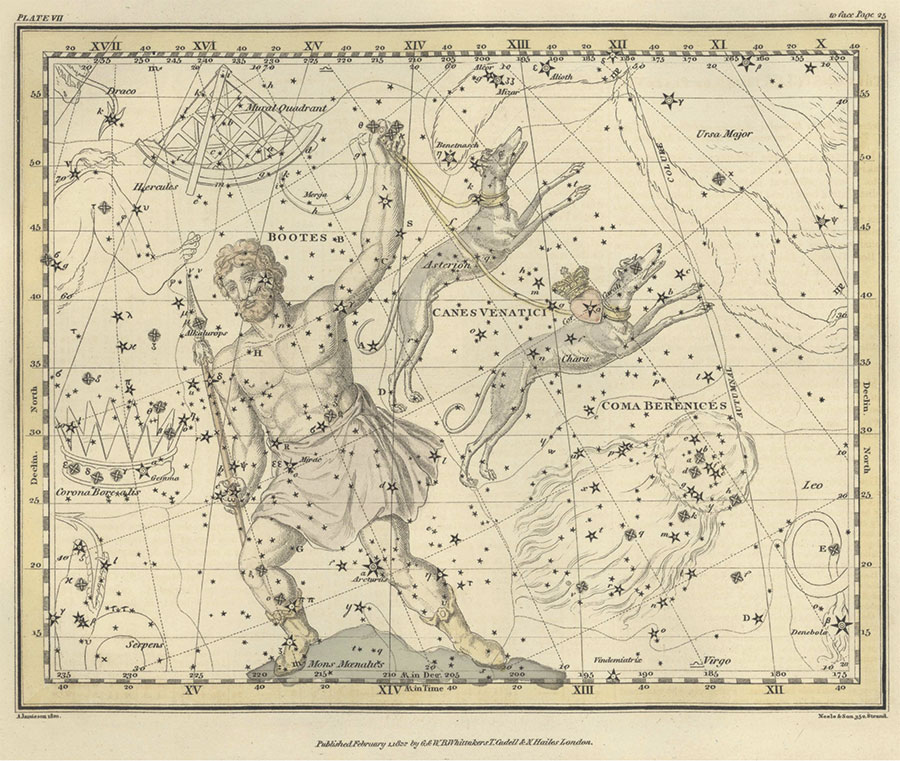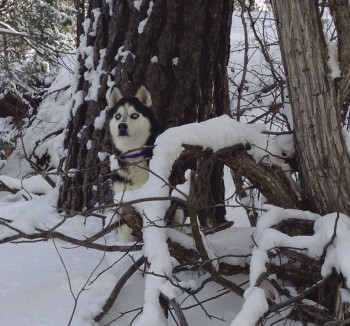By Donna Carey, LAc and Ellen F. Franklin, PhD
Oriental Medicine Journal - New Year 2018 - Vol. 26, No. 1
Year of the Dog:
February 16, 2018, to February 4, 2019
The Dog in the Zodiac
We start the Chinese New Year of 2018 on the New Moon with the crowning of the Yang Brown Earth Dog, the most communicative, serious, and hardest working elemental canine in the Chinese zodiac. According to the Chinese Horoscope Male Earth is connected to the mountain; and this year it is a double mountain, a mountain behind a mountain, or a mountain next to a mountain, which signifies strong earth and earth pursuits such as real estate, agriculture, environment, earth healing, protection of tribal lands, territorial integrity for religious and spiritual uses of land, defending the earth against violence and material exploitation. Since it is so strongly yang we may also see many planetary social changes especially in regard to national security since there is such a strong connection among the dog, intelligence, and protection. We could also see conflicts in the Middle East and North Korea, where there is a yearning for fairness, social justice, and improved standards of living. Hopefully, we will see the benevolent influence of the dog, in its role as mediator, take the forefront.
The dog has a unique ability to sense and understand the human spirit.
 Direction: East, Southeast, South
Direction: East, Southeast, South
Fixed Element: Metal
Stem: Positive
Western Sign: Libra
Color: Green, Red, and Purple
Flower: Rose, Oncidium, Cymbidium Orchids
Fragrance: Balsam
Tree: Cherry
Birthstone: Ruby
Lucky Number: 3, 4, 9
Years of the Dog: 1922, 1934, 1946, 1958, 1970, 1982, 1994, 2006, 2018
Canines and Humans
Dogs dominate our homes, emotional landscapes, cities, pueblos, business enterprises, airports, cancer institutes, disastersites, homes for elders, and security forces. They pull sleds, carry gear, herd cattle, guard our homes and businesses, assist the living and dying, entertain us, retrain us. They are involved in research and participate in rehabilitation and outreach to heal families and communities, as they open and mend hearts. In short, dogs are an integral piece of an evolving understanding of between-species communication and unusual partnerships that enrich both parties; and they help individuals, communities, and societies grow in understanding, compassion, and perspective.
All dogs are wonderful; and all dogs are equally beautiful, intelligent, provide love, and worth loving. Like humans and all other species, they have a wide range of genotypes, and they have evolved many traits and genetic modifications that enable them to adapt to changing conditions in climate, habitat, and social relationships. Unlike other species, which evolve through natural selection, which occurs over time as a process of nature and the environment, many canine breeds are the direct result of human intervention. Humans have bred dogs for a wide variety of purposes to suit their needs. This has led to a system of classifying canine breeds into types based on size, shape, function, and temperament.
In 1911 the Federation Cynologique International (FCI), or the World Canine Organization, was formed in Europe. FCI recognizes 332 breeds and 10 classification groups that are accepted throughout the world.
FCI Type Classifications
- Sheepdogs and cattle dogs, including Bouviers and Collies, German and Belgian Shepherds, and Welch Corgies.
- Pincher, Schnauzer, Molossoid, and Swiss Mountain dogs, including the Boxer, Bulldog, Doberman, Leonberger, all Mastiff breeds, the Newfoundland, and a host of others.
- Terriers, including all Terrier dogs, including the Jack Russell.
- Dashounds, which is only this breed and is classified by size and coat.
- Spitz and Primitive types, including Nordic and Asian dogs, such as the Akita Inu, the American Akita, Alaskan Malamute, Chow-Chow, and different Elkhound including the Hokkaido, Icelandic Sheepdog, Laika breeds, the Samoyed, Shiba Inu, Siberian Husky, and all breeds ending in “hund.“ Primitives include the Basenji, the Canaan Dog, the Mexican and Peruvian Hairless Dogs, the Pharaoh Hound, and the Podencos.
- Scenthounds and related breeds, including the Bloodhound and the French Grands
- Pointers and Setters, including the French Braques, the Griffons, the Hungarian Vizsla, some Spaniel types, and Weimaraner, as well as any breeds possessing “pointer” or “setter” in their names.
- Retrievers, flushing dogs, and water dogs, including different types of retrievers, spaniels, and all water dogs.
- Companion and toy dogs, including Bichons, Boston Terrier, Chinese Crested, Chihuahua, French Bulldog, Lhasa Apso, Poodles, the Pug, Shih Tzu, and some Spaniels and other lapdogs.
- Sighthounds, including Afghan Hound, Borzoi, different types of Greyhounds, Irish Wolfhound, Saluki, Scottish Deerhound, and the Whippet.
Classification of Dogs According to Function
Some associations classify dogs according to their function or role in human society; these classifications are rapidly changing. Current classifications are as follows:
Working Dogs: “Working” has many interpretations, and the categories become fluid. Many companion dogs work and help to alert, warn, give emotional support, guide, and perform a multitude of tasks which are more akin to the modern functions of dogs we commonly call “service dogs.”
Companion Dogs: One could argue that many if not all breeds have become companions, but this particular category is reserved for the toy dog, specifically bred as lapdogs. These include Bichons, Pomeranians, and all the designer cross-breeds and hybrids.
Guard Dogs: These are the mastiffs, mountain dogs, pit bulls, schnauzers, and others which can guard livestock, humans, homes, and a multitude of other things. Guard dogs are not attack dogs.
Hunting Dogs: The Hunting dog breeds, which are known as “gun dogs,” include Spaniels, Retrievers, Setters, Pointers, Water Dogs, and different types of hounds, Dachshunds, and Terriers.
Pastoral Dogs: These are herders, cattle dogs, Collies, Corgis, and Shepherd dogs. Sometimes functionalityoverlaps with guard dogs.
Sledge Dogs: On the rapidly melting planet, some dog breeds are still used to pull sleds, supplies, and peopleover the snow and ice in the Arctic. These would be Eskimo dogs, huskies, and other Spitz breeds.
Tasks That Dogs Perform
Dogs help humans by performing many tasks in service, hunting, or entertaining, and have actually been of help and service to humans for hundreds of years.
Service and Assistance:
Mobility Support dogs are trained in bracing and balancing the physically disabled
Hearing dogs warn of particular words, sirens, and bells
Guide dogs provide visual assistance
Seizure alert dogs are trained for post seizure support including warning and bringing medication
Psychiatric Service dogs help with depression, anxiety, and a range of psychiatric conditions
Autism dogs are trained to ground persons with Autism Spectrum Disorder, especially children, through physical contact.
There are a wide range of other services, including Diabetic Alert dogs, Medical Alert dogs, Severe Allergy Alert dogs, and Wheelchair Assistance dogs. All of these service dogs work tirelessly and devotedly to improve the lives of their human companions and enable them to live more independently.
Therapy Work: Therapy dogs provide a calming presence to individuals in nursing homes, hospitals, and stressful situations. These are the comforters and the energy holders and can become certified no matter the breed as long as they are committed to be with humans and are able to obey commands.
 Search and Rescue: Search and Rescue dogs have keenly developed olfactory senses. They are able to smell small particles in the air and ground and can detect the scents of missing individuals in rough and brutal landscape and weather conditions, even under water.
Search and Rescue: Search and Rescue dogs have keenly developed olfactory senses. They are able to smell small particles in the air and ground and can detect the scents of missing individuals in rough and brutal landscape and weather conditions, even under water.
Herding: These breeds, which work alongside humans to herd cattle, sheep, reindeer, and fowl, are the Australian Cattle Dogs, Border Collies, and Kelpies.
Sled Dogs: Throughout history, sled dogs were the explorers leading the way in the first expeditions to the north and south poles and the Antarctic. They carried supplies for Native hunters and delivered medications and supplies to isolated villages.
Mascots: Mascots represent a large range of groups and organizations and have done so for centuries, whether it is universities, government institutions, or private sector businesses and organizations. Think Target and the Budweiser dogs.
Hunting and Flushing: These are the sight hounds and scent hounds that hunt alongside human hunters. Setters and Spaniels are most common.
Guarding/Watchdog: Dogs can be used to guard over anything, whether it is livestock, soldiers, or property. Just about any breed can be fit for this job, and they make intensive use of their bark.
Racing: Thankfully, the sport of greyhound racing is in decline due to welfare concern for the dogs. Adoption of ex-racers is quite popular. As of now, only nine states allow Greyhound racing.
Water Rescue: Water Rescue dogs swim out to humans in trouble and bring them back to shore. They are able to recognize unconscious swimmers and respond accordingly. Newfoundland dogs are common rescue dogs.
Truffle Sniffing: The Lagotto Romagnolo is the one and only breed with the skills to sniff out the gold—namely the rare truffle mushroom.
Detection Dogs: These dogs sniff out anything from bombs to bedbugs to cancer to cellphones and marijuana in prisons.
Show Dogs: The infinite hours of working with their human handlers and their dedication, patience, and commitment behind the scenes to the life of show makes these dogs worthy of any blue ribbon.
Cadaver Detection Dogs: These dogs, along with Search and Rescue dogs, are used to locate victims and alert rescuers to decomposing bodies during disaster situations.
Police Work Dogs: Police dogs help with search and rescue, cadaver detection, and by and large keep public order.
War Dogs: War dogs serve internationally and domestically, working beside service men and women during conflict for guarding, attacking, detecting, running
messages, and boosting morale.
Carting Dogs: Bernese Mountain dogs, Greater Swiss Mountain dogs, and Huskies, along with many other working breeds, are cart pullers.
Rat Extermination Dogs: The small and fearless Terriers were bred for the task of vermin exterminating.
Entertainment Dogs: These dogs have entertained us on the big and small screen venues, and will forever be in our hearts and our culture.
Our canine friends give to us in so many ways, through the many services they perform and by the unconditional happiness and love, they extend to help us balance our lives and remember we are in partnership with other species. Perhaps they give to us, as well, the gift of humility and a love for the earth. But there is another reason we love them so very much: when we look into each other’s eyes, we both receive the gift of oxytocin, the feel-good hormone. This is the exact same hormone that bridges the bond between new parents and their babies. Studies show that when dogs and humans encounter each other, oxytocin increases 130% in dogs and over 300% in humans, regardless of gender.
Dog in Myth and Archetypes
On February 16, 2018, the year of the Earth Dog begins. The eleventh animal in the twelveyear zodiacal cycle is in its yang form. Tolerance, empathy, global solidarity, and social justice issues will be front and center. During this time, with support from noble, vigorous, righteous Earth Dog, there are opportunities for material and spiritual wealth.
 Consider for a moment how often the word “dog” is used in language, “hair of the dog,” “being in the dog house,” “working doggedly;” from the Anglo-Saxon language “to dog” means “to guard.” Whether you subscribe to the idea that dog took the initiative to domesticate human or that human invited in dog for protection, to aid in hunts, to guide, or to provide constant companionship, dog has contributed to our evolution and is an integral part of human development throughout the world. Dogs are depicted in ancient cave paintings, and remains of actual dogs or dog figurines have been discovered in sacred wells of the Celts and burial grounds throughout the world including China. The dog is a powerful aid to shamans throughout the world and also appears in theological writings, where a deep connection to dog is likened to the relationship to God.
Consider for a moment how often the word “dog” is used in language, “hair of the dog,” “being in the dog house,” “working doggedly;” from the Anglo-Saxon language “to dog” means “to guard.” Whether you subscribe to the idea that dog took the initiative to domesticate human or that human invited in dog for protection, to aid in hunts, to guide, or to provide constant companionship, dog has contributed to our evolution and is an integral part of human development throughout the world. Dogs are depicted in ancient cave paintings, and remains of actual dogs or dog figurines have been discovered in sacred wells of the Celts and burial grounds throughout the world including China. The dog is a powerful aid to shamans throughout the world and also appears in theological writings, where a deep connection to dog is likened to the relationship to God.
From Sumer to ancient Egypt, Asia to the Americas, dog plays a significant role in human evolution, rituals, and dreams and is featured in creation stories, myths, and legends. Dog appears in the heavens as Sirius, the dog-star and guardian of the sun, moon, dawn, and dusk and the summer and winter solstices, as psychopomp and guide to the Underworld, and as protector and faithful companion – a profound connection that makes us human.
 Dog appears in the heavens as Sirius, the dog-star and guardian of the sun, moon, dawn, and dusk and the summer and winter solstices.
Dog appears in the heavens as Sirius, the dog-star and guardian of the sun, moon, dawn, and dusk and the summer and winter solstices.
Dog depicted as the first of the animals to join man and woman as friend and companion, guardian and guide, is found in countless mythologies as a symbol of loyalty and devotion. It is likely that it is dog’s keen sense of smell and exceptional ability to sniff out that which is hidden that links this archetype to the unconscious.
There are also numerous examples of Dog used in a pejorative way to describe someone difficult or unpleasant, or someone who hunts down or harasses another, as in “to dog.” It also describes something of inferior quality, or worthless; and, in ancient Greece, the word “dog” was used to describe someone transgressive or engaging in bad behavior. “Bitch,” the term for a female dog, has been used as a slur against women since the fifteenth century.
Dogs as Healers and Guides and Guardians of the Underworld
Residing between life and death, the known and the unknown, physical and spiritual, conscious and unconscious thought, dog provides deep access to psyche and soul. Dog has gifts both to wound and to heal. Dog is linked to Asclepius, the Greek god of healing, and to the straw dogs of China that were believed to prevent plague. In France the lick of the dog’s tongue is believed to have healing properties, de chien sert de médecin. Dog also serves as benefactor and guide to lift us out of darkness and reawaken shut down hearts. In Holland along the Rhine, numerous altars to the mother goddess Nehalennia have been discovered. She was depicted with dogs and, as a result, is compared to Epona, the horse-goddess who is always shown with dogs. Mother goddesses throughout time are used to represent both healing and death and are often depicted nursing, carrying a harvest basket, and being accompanied by a dog. In Mesopotamia, the image of the sitting dog was believed to represent Gula, the goddess of healing. In Assyria and Babylon, the image of a dog was placed on amulets of protection.
Among the indigenous Ainu of Japan, it was believed that the dog has the ability to detect ghosts or observe spirits. In literature, such as The Hound of the Baskervilles, a ghost-like hound pursues those who have committed some evil, pushing them toward death, or, if warranted, they may protect the children of those who have passed on. Yet, there are also ghost hounds who bring the gift of healing, as we see in ancient Greece.
Concepts surrounding death, the underworld, and burial often are linked to the dog. In the Attic custom a honey cake is used to pacify the hounds of hell. Jung (1964) proposes that the dog and the underworld serpent are one and the same, protectors of the innermost treasures to be found deep within the Earth. From Ancient Sumer to Central Asia, Mexico, Tibet, India, and the Americas there are myths of the dog as guardian to the gateways to the underworld. In early Indo-European culture Dog is often stationed at dangerous spiritual crossroads to guard both the celestial and the temporal, including dawn and dusk, the new and full moons, and the summer and winter solstices.
 The image of Dog at a crossroads and as guide to the underworld is not dissimilar to the myths of Mercury who, as a psychopomp, guides souls to the underworld and is a protector of travelers and crossroads. Also, from the Greeks we have the myths of Hecate, goddess of night, the underworld, darkness, and hidden things. She is associated with the moon and rules over birth, life, death, and gateways and is depicted with a torch and a pack of hounds. In some imagery, she is depicted as three-headed – a dog, horse, and lion. In other Greco-Roman myths Hades, brother to Zeus and Poseidon, is the dark god and keeper of the keys to the underworld, often accompanied by the three-headed dog Cerberus.
The image of Dog at a crossroads and as guide to the underworld is not dissimilar to the myths of Mercury who, as a psychopomp, guides souls to the underworld and is a protector of travelers and crossroads. Also, from the Greeks we have the myths of Hecate, goddess of night, the underworld, darkness, and hidden things. She is associated with the moon and rules over birth, life, death, and gateways and is depicted with a torch and a pack of hounds. In some imagery, she is depicted as three-headed – a dog, horse, and lion. In other Greco-Roman myths Hades, brother to Zeus and Poseidon, is the dark god and keeper of the keys to the underworld, often accompanied by the three-headed dog Cerberus.
Both Diana, goddess of the hunt, and Actaeon hunt with their dogs. But, it is Actaeon’s curiosity that results in his loss of life at the hands of Diana. After a long hunt with his beautiful hounds Actaeon takes a stroll in the woods and blunders into the sacred grove of the goddess Diana, where he sees her bathing with her acolytes. Although her faithful companions endeavor to protect the goddess from Actaeon, she acts quickly. Rising up, she tosses water into the eyes of Actaeon, transforming him into a stag. Catching his reflection in the pool of water, Actaeon runs in fear. He is trapped in the body of the very animal he hunts. His hounds, no longer able to identify their master, catch his scent and run after him. Unable to speak, the hunter is now hunted by his loyal companions. Anubis, one of the eight early Egyptian gods, is the protector of souls as they travel through the Land of the Shades, and the guardian of mummification, funerals, and tombs. Responsible for determining the fate of a soul in the Hall of Judgement, he weighs the heart of the dead against the Feather of Truth. If Anubis determines that the heart is out of balance, he casts it to the eater of souls, depicted as a dog, bushy-tailed black jackal, or dark-skinned man with the head of a dog. Sirius, the dog-star, also known as the brightest star, is considered the star of Isis. It is visible just before sunrise at the time of the winter solstice, marking the beginning of the Egyptian Year.
In Mexico in myths of the Aztec, Toltec, and Maya, Xolotl is associated with the creation of humanity, the ability to bring us from a darkened state, passages to death, the evening star, and the planet Venus. In dog form Xolotl accompanies souls and the Sun into paradise and the underworld. He is also depicted as companion to Quetzalcoatl, the supreme deity, god of air, fertility, wealth, medicine, and the healing arts and is sometimes referred to as his twin. Dogs are also a part of many North American Native traditions, viewed as people; they may appear in dreams to offer important information. Across central Asia and among the Inuit of North America there are many origin myths that result from the coupling of a human female and a male dog.
To the Celts, the dog was especially esteemed, symbolic of both healing and death. ese two symbolic aspects reflect dogs’ representation of rebirth and their use in sacrifices. Dogs were a common sacrificial item in many wells throughout Great Britain, Europe, and the Mediterranean until the first few centuries of the Christian era.
The Dog in China
In Chinese Mythology, the dog accompanied human heroes and was the provider of grain, thus contributing to the rise of agriculture. Among some communities the dog was viewed as an original ancestor, mating with humans, not unlike the Inuit myth in which Sedna mates with a dog-man. The relationship of the dog to death can be found throughout ancient China. The Shang emperors were buried with their watchdogs, and dog figurines have been found in burial grounds of the
Han emperors. Dog remains have also been found buried in the foundation of Shang period buildings.
References to “straw dogs” can be found during the Shang and Han periods in China as well as in Chapter 5 of the Tao de Ching. Straw dogs serve both as a ceremonial and healing tool that protects against epidemics and as a guide to the underworld. Crafted with care and treated with deference, once their purpose was fulfilled they were tossed aside.
Heaven and Earth
Heaven and Earth are impartial;
They see the ten thousand things as straw dogs.
The wise are impartial;
They see the people as straw dogs.
The space between heaven and Earth is like a bellows.
The shape changes but not the form;
The more it moves, the more it yields.
Hold fast to the center.
White (1991) identifies Dog as the animal pivot of the human universe, sitting between wildness and domestication and giving rise to numerous Dog-Man myths that feature a hybrid wild dog-human found in mythology around the world.
Numerous Dog-Man myths originate from China, including a belief among certain ethnic groups that their origins are the result of a union between human and dog. These include myths that describe a race of Amazon women living with Dog Men, who conceive by bathing in a river. Among the earliest documented myths are those of Dog Jung, who descended from two white dogs and whose lineage dates back to the time of the Yellow Emperor.
Although there are numerous origin stories the one most often told is that of P’an Hu. In one version of this myth the Emperor is deeply troubled by the banditry and warring of the tribe Dog Jung. Forays against them are unsuccessful, as General Wu, chief of this tribe, is very formidable. Frustrated beyond measure the emperor issues a proclamation that is sent far and wide. Whoever brings him the head of General Wu will be granted gold, land, and the hand of his youngest daughter in marriage. Sitting close to the Emperor as this proclamation was issued was his faithful dog P’an Hu, whose fur was said to be of five colors. Hearing the proclamation, P’an Hu sets off to take on General Wu. Successful in his mission he returns to the palace with the head of the general. Although the Emperor plans to reward his loyal dog, he feels it is not possible to honor his proclamation and give his daughter as a reward. However, when she hears of this betrayal by her father, she steps forward. Not allowing her father to go back on his word, she honorably sets off with P’an Hu, who carries her into the southern mountains. Soon the Emperor regrets his decision and sends people off in search of his beloved younger daughter. The land was treacherous and inhospitable, and the searchers fought against wild winds, torrential rain, and earthquakes and were forced to turn back without her.
P’an Hu and the princess live in harmony in the mountains. Three years after her marriage she gives birth to twelve children, six girls and six boys. Shortly after this blessed event P’an Hu dies, and the princess raises her children in the wilderness. Eventually, the children reach maturity and marry one another, and so their lineage continues. They live in the wild, weaving tree bark and crafting five-colored clothing with tails. Eventually the Emperor’s daughter returns to
seek protection for her children, and her father immediately summons all of his grandchildren to court. Although they heed this summons and come before him, they do not wish to live there as they prefer the mountains and ravines of their birth. Honoring their wishes, the Emperor bestows land upon them and their descendants, who have multiplied and become known as the Man-i or barbarians, a race that is cunning and conservative and prefers to stay close to home.
In another version of this myth, Dog places the head of the general at the feet of the Emperor and awaits his reward. Once confirmation is received that the hostile invaders are retreating, the dog reminds the Emperor of his promise. The grief-stricken Emperor cannot bring himself to marry his daughter to Dog. Dog asks, “Will you agree to this marriage if I become a man?” The Emperor quickly agrees, and Dog informs him that for this transformation to take place he must sit under a sacred bell for 280 days and not be disturbed, moved, or looked upon or the transformation will fail. For 279 long days, the Emperor honors this promise. However, unable to restrain his curiosity a moment longer, he gently lifts the bell to peek at the transformation. The dog, true to his word has transformed into a man, standing upright under the bell. Only the head of dog remains. Unfortunately, the impatience of the Emperor has stopped the transformation. The spell now broken, the overly-inquisitive and impatient Emperor must keep his promise. The wedding takes place with the bridegroom’s dog head draped in red cloth. It is said that the children of their union, while beautiful in body, were ugly in features and continued to keep their heads covered. Dog worship of the Jung tribe is attributed to this legend, as Dog is the victorious ancestor who defeated the Western invaders.
20 Jobs Dogs Have Performed. (2017, December). Retrieved from http://www.dogguide.net/20-jobs-dog-have-done.php
Barone, M.A. (2017, December). Why People Love Their Dogs So Much, According to Science. Huffington Post. Retrieved from: https://www.huffingtonpost.com/2015/05/12/why-people-love-their-dog_n_7204984.html
Bertin, J. How Are Animals Classified into Types and Groups? Animal Wised. Retrieved from: https://www.animalwised.com/how-aredogs-classified-into-types-and-groups-1188.html
Feng, G.F. & English, J. (1989). The Complete Tao Te Ching by Lao Tzu. New York, NY: Vintage.
Hare, B. & Woods, V. (2013, March). Opinion: We Didn’t Domesticate Dogs. They Domesticated Us. National Geographic News.
Retrieved from: https://news.nationalgeographic.com/news/2013/03/130302-dog-domestic-evolution-science-wolf-wolves-human/
Jung, C.G. (1964). Man and his symbols. New York: Doubleday and Company, Inc.
Leeming, D. A. (1992). The world of myth. New York, New York: Oxford University Press.
Tremmi, B. (2012, November). The 15 Best Dogs in Popular Culture. Paste. Retrieved from: https://www.pastemagazine.com/blogs/lists/2012/11/the-15-best-dogs-in-popular-culture.html
Varner, G.R. (2007). Creatures in the mist: Little people, wild men and spirit beings around the world: A study in comparative mythology. New York, NY: Algora
Von Franz, M.L. (1999). Archetypal dimensions of the psyche. Boston, MA: Shambhala.
Walker, B.G. (1983). The woman’s encyclopedia of myths and secrets. San Francisco, CA: Harper.
Werner, E.T.C. (1994). Myths and legends of China. New York, NY: Dover.
White, D.G. (1991) Myths of the dog-man. University of Chicago Press, Chicago, IL

